It's a dream of thousands of devotees around the world to visit the sacred region, Kailash Mansarovar. Why? Because of unparalleled religious significance, natural beauty, and challenges it possesses. But when do you think one can experience this sacred yatra at its best? Let us guide you through the best time to visit Kailash Mansarovar focusing on various aspects of the yatra like the weather, seasonal breakdown, packing items and more.
The Kailash Mansarovar Yatra, which is generally open from May to September, is only accessible for 5 months of the year, with the remaining months being seasonally inappropriate. However, within this time, certain months stand out. May and June offer pleasant temperatures, while September and early October provide clearer skies and fewer crowds. The winter season makes the yatra totally inaccessible due to very heavy snowfall and monsoon rains with its ability to have unpredictable rainfalls and access hurdles during travel.
So, are you wondering why an ideal time is important while traveling? The optimum time guarantees that the attractions like Mount Kailash and Lake Manasarovar can be seen clearly and at their best. Besides, it also provides a safe and fulfilling journey. Ultimately, the ideal time to visit depends upon the individual preferences, priorities and the tolerance for varying weather.
What is Kailash Mansarovar Yatra?
In the remote and beautiful landscapes of Tibet lie sacred Mount Kailash and the holy Lake Mansarovar. The whole yatra revolves around these attractions, as the name states. The mountain, standing majestically at an altitude of 6,638 meters and the lake with its tranquil beauty are what make the yatra sacred. Anyone completing the Kailash Mansarovar Yatra is believed to achieve salvation and is liberated from the cycle of birth and death.
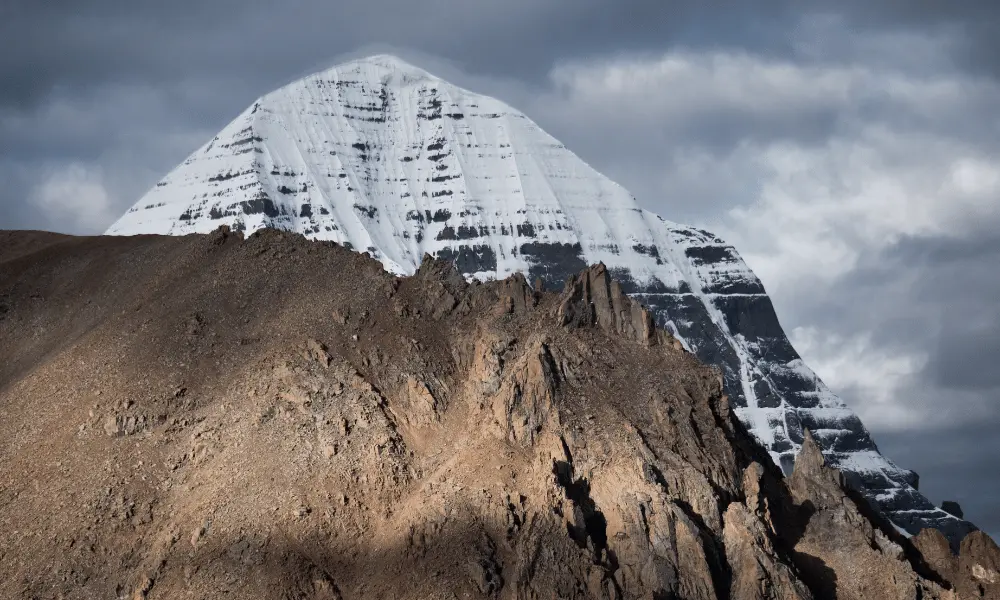
The yatra is spiritually significant among four major religions: Hindu, Buddhist, Jains and Bon followers. In Hindu belief, Mount Kailash is considered the eternal abode of Lord Shiva and his consort Parvati. Likewise, the Tibetan Buddhists regard Mount Kailash as the home of the Buddha Demchok. Similarly, for the Jains, the first Tirthankara, Rishabhadeva, attained liberation here, while the Bon religion considers it to be the primary seat of all supernatural powers.
Besides that, the yatra is not only spiritually significant but also a test of physical endurance. It is regarded as one of the most sacred and challenging pilgrimages in the world, which takes place at an average altitude above 5000 m. While the whole journey can be completed from 10 to 17 days according to pilgrims preferences and the route chosen, the actual yatra, also known as circumambulation/kora around Mount Kailash, takes about 3 days to complete, covering a total distance of about 52 kilometres. Whatsoever, with its deep religious significance and rich natural beauty, this yatra attracts thousands of pilgrims around the world every year, showing their devotion to the divine.
Geography of Kailash Mansarovar
The geography of Kailash Mansarovar is as complex as it is stunning; it is located in the heart of the Himalayan ranges in Tibet. Mount Kailash, the central focal point of the region, stands majestically at an altitude of 6,638 meters. Mount Kailash has a unique shape unlike other Himalayas, featuring four faces that correspond to the four directions (north, south, east, and west) and are composed of geological materials having distinctive meaning for each face. The east face stands for Crystal, the west for Ruby, the north for Gold, and the south for Lapis Lazuli.
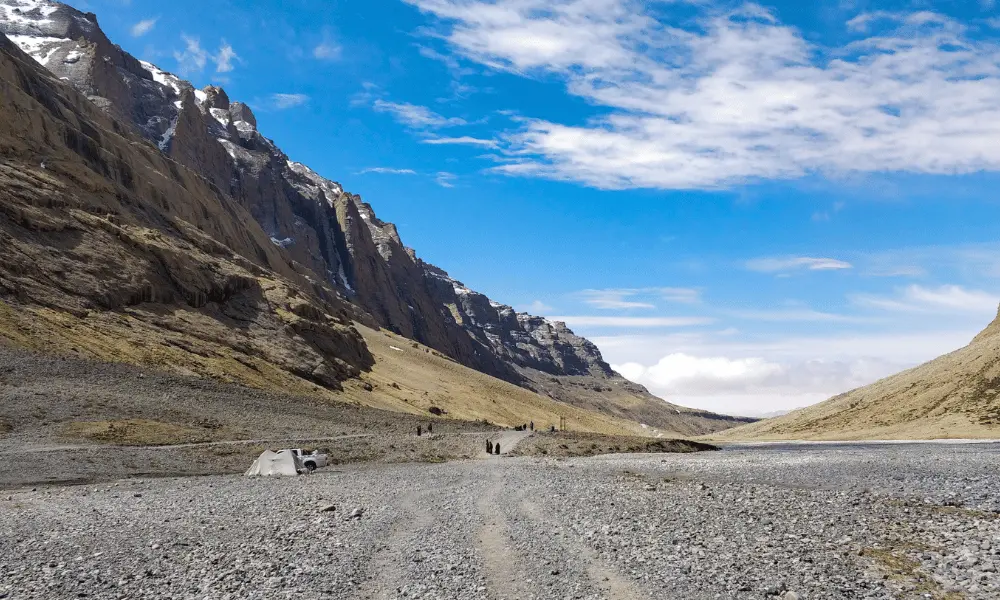
Located southeast of Mount Kailash, approximately 20 kilometres is another masterpiece of this journey, Lake Mansarovar. It's one of the highest freshwater lakes in the world, with an impressive altitude of about 4600 meters. The lake covers a vast area of 320 square kilometres, stretching for roughly 88 kilometers in perimeter, with depths reaching 100 meters. At a distance from the lake, Mount Kailash with other high Himalayan peaks can be seen standing tall and proud, which makes the whole landscape seem like it came straight out of a painting. The region's extreme conditions at high altitudes create an environment of thin air, cold temperatures, and stark landscapes, which keep the region largely untouched and unspoiled, enhancing its mystical aura and spiritual relevance. It is this pristine beauty along with a high spiritual aura that makes the region one of the most astonishing and mysterious landscapes on Earth.
Seasonal Breakdown
The Kailash Mansarovar region experiences four seasons with the variation in weather, which determines the degree of accessibility and provides different experiences for the travelers. The timing of the year, from the dismal days of the somber winter to the serene sense of autumn clarity, clearly offers distinctive conditions. Each season comes with its own challenges and blessings, deciding from access to the trail to the very quality of spiritual experience. Thus, having insights into the seasonal variations is a must for organizing a safe and meaningful pilgrimage to the site. The detailed description below explains what each of the four seasons offers to the pilgrims.
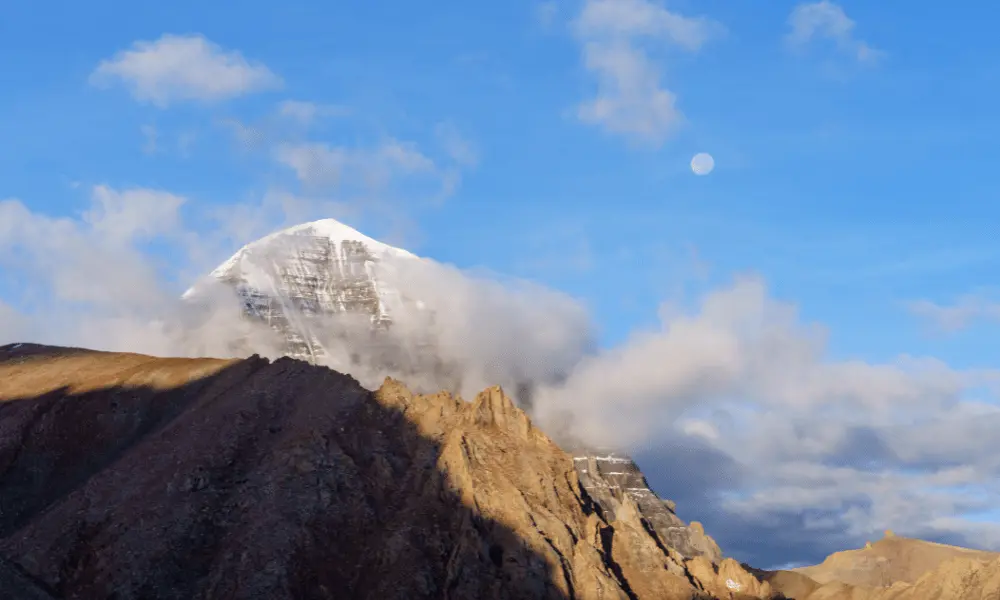
Winter (Late October to Early March)
Winter conditions in the region are terribly severe, often dipping well below -15°C. Heavy falls, cutting winds, and icy weather make the pilgrimage all but impossible during those months. In most cases, the access routes remain closed, and local services, lodges, and checkpoints also shut down if extreme weather constitutes a threat. For most pilgrims, this time is dedicated to spiritual reflection from afar, as the actual journey to Kailash Mansarovar will be deferred until the arrival of spring.
Spring (March to May)
Spring is considered one of the best seasons to visit Kailash Mansarovar. As the extreme cold of winter gives way to spring warmth and sunshine, the entire valley is awash in the magic of intriguing landscapes and crystal-clear views of Mt. Kailash and surrounding Himalayas. The temperature during this time lingers between 5°C to 15°C, making it blissfully pleasant for trekking and pilgrimage. The holy lakes of Manasarovar and Rakshastal begin to melt in this period, thus offering a deep symbolic picture with an aura of tranquility. The season strikes a wonderful balance between access and scenic beauty, especially suited for first-time pilgrims or anyone in search of a spiritual experience in less arduous weather. However, nights can be cold, especially early in spring, at higher elevations.
Summer (June to August)
Summer corresponds with the onset of monsoon winds that warm the air just above freezing to around 15°C. Much of the Tibetan Plateau receives scant amounts of precipitation, while heavy rainfall along the routes found within the region connecting Nepal poses a threat of landslides, not to mention slippery routes. Travel is severely affected during this time, yet it bears much religious importance since festivals such as Saga Dawa, which commemorate the enlightenment of Lord Buddha, fall during this period. The landscape is lush green and colorful, with shining lakes bursting to life. However, with changing weather conditions, road closures, and delays, this season becomes highly unsuitable for an average tourist and quite rewarding for the dedicated pilgrim willing to fight through the natural adversity for a greater purpose.
Autumn (September to early October)
The fall is yet another important season when the Kailash Mansarovar pilgrims make their pilgrimage. The trails are rendered clean and free of dust, and the atmosphere is crisp and fresh after the monsoon rains. Daytime temperatures range from 0°C to 10°C, while nights become quite cold. This season offers spectacular views of Mt. Kailash under clear blue skies. It offers a more peaceful, intimate and private journey, less traveled than spring and summer. The trekking conditions would allow an easy journey. The post-monsoon clarity adds to the special charm of the region. Traveling during this season will be a time well spent for those looking for silence in their spiritual quest and magical sights without the fear of cold winter.
|
Season |
Temperature |
Features |
|
Winter (Late October to Early March) |
Daytime: 0°C to -15°C Nighttime: Can plummet to -20°C or even lower |
|
|
Spring (March to May) |
Daytime: 5°C to 15°C Nighttime: -10°C or even lower |
|
|
Summer (June to August) |
Daytime: Around 15 °C Nighttime: Around 0°C |
|
|
Autumn (September to early October) |
Daytime: 0°C to 10°C Nighttime: Below 0°C |
|
Best Time to Visit
The best time to visit largely depends upon what you expect from the journey. How do you want to travel? As the Kailash Mansarovar Yatra runs from May to September, the best time to visit falls within these months. The ideal visit period to Kailash Mansarovar is dependent on the different factors associated with its weather conditions, accessibility, and the nature of the spiritual or travel experience one is looking for.

Nevertheless, it is commonly accepted that the late spring (June) and early fall (August) comprise the perfect periods for visiting the holy place. Weather remains quite steady, skies are clear, routes are accessible without the harsh cold of winter and without uncertain rains that occur during summer months. During these times, pilgrims can experience the most awe-inspiring view of Mount Kailash and Lake Mansarovar, as well as the serene natural beauty of the spiritual journey that can be experienced in this yatra.
The monsoon period, which falls between June and August, may bring occasional rains and cloud cover. Therefore, some may argue that these months might not be preferable to travel. Some pilgrims also prefer the time of early September which provides the best balance between good weather and fewer crowds. It highly depends upon your preferences if you want to visit in earlier months when the yatra is at its peak. If you don't like crowded travel, participating in the yatra in the month of September would be best to avoid the large crowds of the peak season.
Things to Know Before Visiting
It is very much essential for an individual to prepare himself both mentally and physically before participating in the Kailash Mansarovar Yatra. It is a difficult journey with high altitudes, cold weather, and remote terrains. Permits should be arranged; you should stay fit, pack wisely, and respect local customs and the spiritual significance of the place. Here are some things to know before visiting Kailash Mansarovar so as to make your journey easy and insightful:
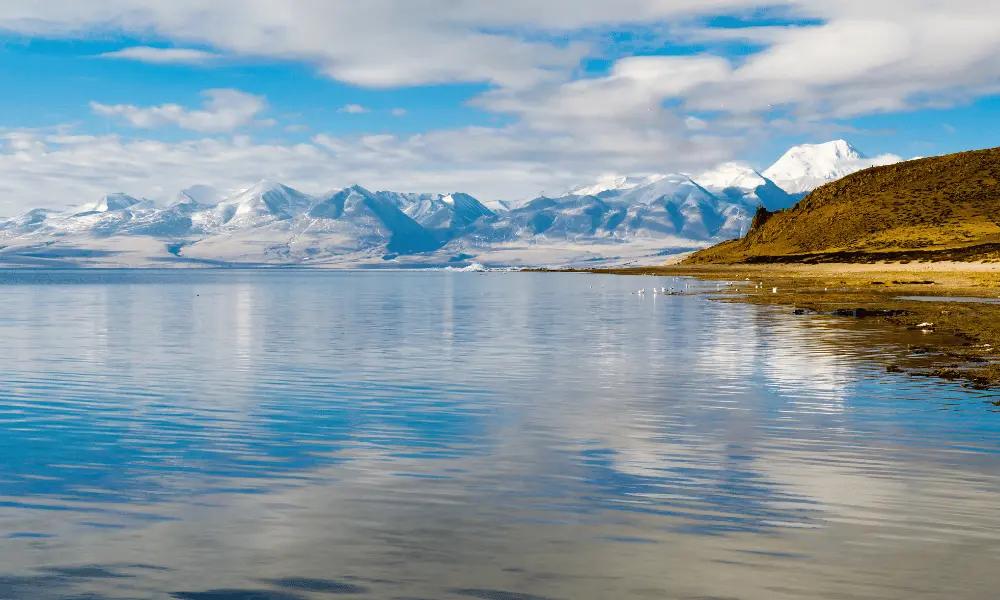
Visa, Permits and Documentation
Visiting Kailash Mansarovar, located in the Tibet Autonomous Region of China, is especially important since it lies in the Tibet Autonomous Region of China. All travelers must possess a valid passport (exceptional for India) with at least six months of validity. The Indian pilgrims can enter Nepal with an Aadhaar card. For the Tibetan side, a group visa is issued instead of an independent visa, which is mandatory and usually processed in coordination with a registered tour operator. Also, travelers must secure the Tibetan Travel Permit issued by the Tibetan bureau. The permit cannot be issued by an individual but instead must be issued through a legal Kailash tour operator.
|
Required Documents |
|
Passport and Some Photocopies |
|
Recent Photograph (White Background) |
|
Nepal Visa (Besides Indian Citizen) |
|
Chinese Group Visa |
|
Tibet Travel Permit |
How to reach?
Kailash Mansarovar, a sacred pilgrimage, can be reached via three different routes from Kathmandu. One needs to arrive in Kathmandu, the capital city of Nepal, before that. There are three routes: via Kyirong, via Simikot and via Lhasa. All these routes take three different transport mediums. The Kyirong border involves driving only. Simikot involves short flights and a helicopter ride, followed by a drive into Tibet. The second, more comfortable but expensive route, takes travelers from Kathmandu to Lhasa by flight and then by road to Kailash Mansarovar. These routes typically take from 10 to 17 days, according to the route chosen and the nationality of the pilgrims.
|
Kailash Mansarovar Yatra Routes |
|
Kailash Mansarovar Yatra via Kyirong (Drive) |
|
Kailash Mansarovar Yatra via Simikot (Flight+Heli+Drive) |
|
Kailash Mansarovar Yatra via Lhasa (Flight+Drive) |
Challenges and Physical fitness
The Kailash Mansarovar Yatra is a spiritual journey and a serious physical challenge. The most difficult part of this journey is the 52 kilometers of Kora (circumambulation) around Mount Kailash, which passes uneven, rocky areas and high mountain passes like the Dolma La, at an altitude of approximately 5600 meters. Pilgrims should be physically fit and are encouraged to do some cardiovascular training and light trekking exercises for a few weeks ahead of this trip. People with issues affecting their lungs or their cardiac or blood pressure conditions should consult their doctor before attempting this trip.
Altitude Sickness
One of the greatest challenging factors during the Kailash Mansarovar Yatra is altitude sickness, also called Acute Mountain Sickness. Since the journey takes one at altitudes above 5000m, pilgrims show symptoms like headache, nausea, dizziness, and breathlessness. Acclimatization days are usually incorporated into the itinerary to allow the body to adjust to the environment. Pilgrims are therefore advised to remain hydrated, take light meals while avoiding alcohol and tobacco, and walk gradually to avoid increased risk. Emergency meds, such as Diamox (after consultation with a doctor) and an oxygen cylinder, would, however, work wonders.
Food and Accommodations
The accommodation and food facilities during Kailash Mansarovar Yatra are basic and arranged by the tour operator the pilgrims are traveling with. Nepal and some initial regions of Tibet like Kyirong, Saga and Darchen, provide satisfactory hotels and guesthouses, but accommodation becomes more basic as the journey proceeds into remote areas like Derapuk. In these remote places, problems of toilets/washrooms are also found. So, the pilgrims are requested to carry toiletries and sanitation materials.
In the context of meals, they are primarily vegetarian, consisting of rice, dal, noodles, soup, and tea as staples. Packaged snacks, energy bars, or instant food would help round up the meals en route. It is advisable for the pilgrims to carry other essentials for comfort and hygiene, like water purifiers, thermos flasks, and sleeping bags.
Recommended Packages
Traveling to Kailash Mansarovar becomes far more comfortable, smooth, and spiritually enchanting by opting for the proper travel package. Given the isolated mountains, high altitude, and the difficult border logistics of the yatra, the pilgrims are suggested to choose packages organized by professionals. Most packaged trips provided are inclusive of transportation, permits, accommodation, meals, and support staff and will not require the traveler to worry about any logistics. Whether one prefers an age-old pilgrimage experience, a luxurious spiritual experience, or even an adventurous drive, packages for any comfort levels, budgets, and spiritual goals are available. Here are a few packages suggested for the Kailash Mansarovar Yatra.
Kailash Mansarovar Yatra by drive via Kyirong
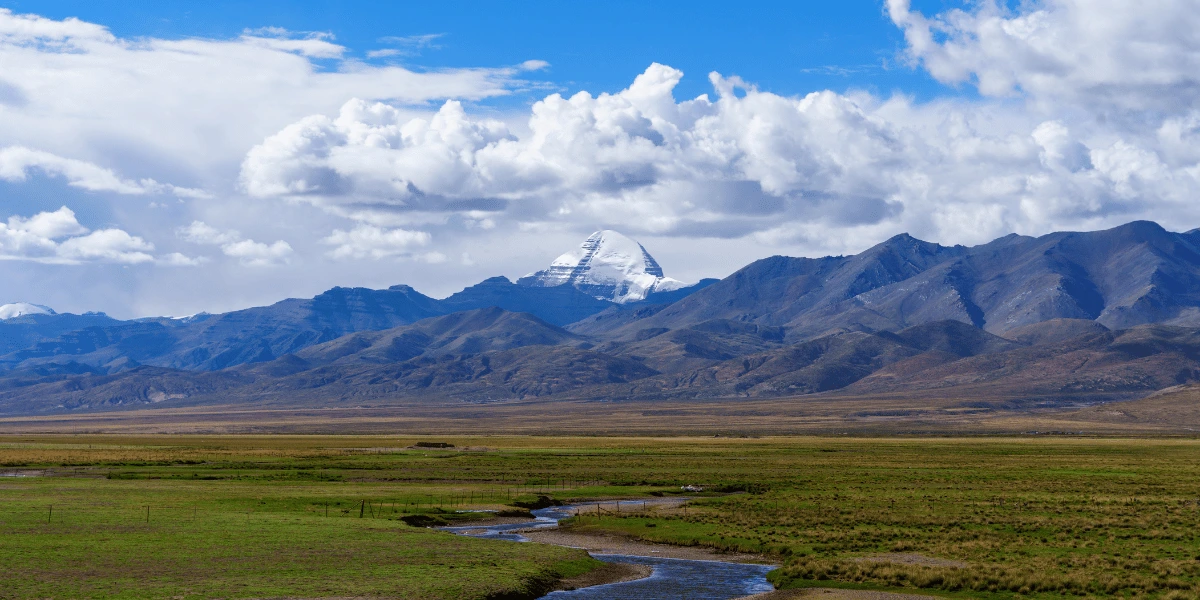
This particular Kailash Mansarovar Yatra through Kyirong provides a perfect blend of spirituality and adventure, commencing from Nepal and crossing the picturesque Tibetan town of Kyirong. The breathtaking views of the Himalayas combined with the spiritual aura of the region; the pilgrims are greeted with splendours of Mount Kailash and serene views of Lake Mansarovar.
Outline Itinerary
|
DAY 01: Kathmandu Arrival. |
|
DAY 02: Visa Application, Kathmandu Sightseeing. |
|
DAY 03: Bhaktapur Sightseeing, Nagarkot Stay. |
|
DAY 04: Chandragiri and Swyambhunath Sightseeing. |
|
DAY 05: Packing and Final Preparation. |
|
DAY 06: Drive to Dhunche or Syabrubesi or Timure. |
|
DAY 07: Drive to Kyirong. (2850 m) |
|
DAY 08: Kyirong Acclimatisation. |
|
DAY 09: Drive to Saga. (4500 m) |
|
DAY 10: Drive to Lake Mansarovar. (4600 m) |
|
DAY 11: Drive to Darchen. (4700 m) |
|
DAY 12: Drive to Yama Dwara, Trek to Deruphuk. (5050 m) |
|
DAY 13: Trek to Zuthulpuk. (4800 m) |
|
DAY 14: Zuthulpuk to Saga. |
|
DAY 15: Drive back to Kyirong. (2850 m) |
|
DAY 16: Drive to Kathmandu. |
|
DAY 17: Transfer to Airport. |
Learn More: Kailash Mansarovar Yatra by Drive via Kyriong
Kailash Mansarovar Yatra by Helicopter for Indians
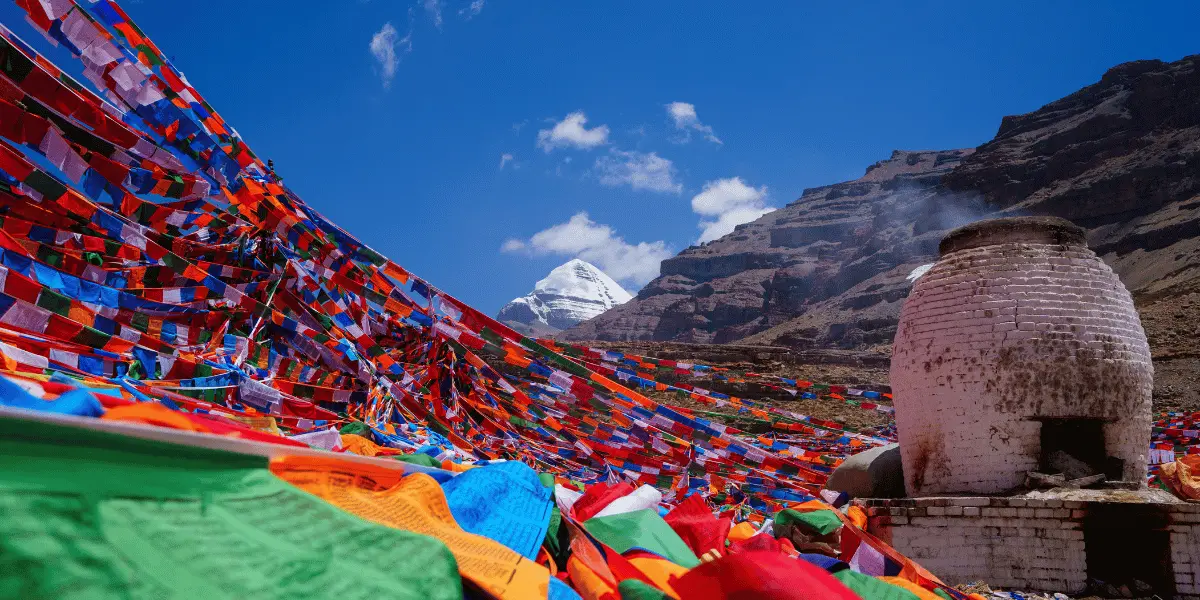
The Kailash Mansarovar Yatra by Helicopter is a prompt spiritual journey for Indian pilgrims who are short on time. This 11-day journey starts from Kathmandu, covers important heritage areas, and offers air travel and helicopter ascents to Tibet. Therefore, pilgrims experience comfort while getting the magnificent views of Mount Kailash, Lake Mansarovar, and the sacred Parikrama easily rather than driving endlessly.
Outline Itinerary
|
Day 01: Kathmandu Arrival. |
|
Day 02: Kathmandu Sightseeing, Fly to Nepalgunj. |
|
Day 03: Fly to Simikot. |
|
Day 04: Heli to Hilsa, Drive to Taklakot. |
|
Day 05: Acclimatization Day at Taklakot. |
|
Day 06: Drive to Lake Mansarovar. |
|
Day 07: Drive to Yama Dwara, Trek to Deraphuk. |
|
Day 08: Trek to Zuthulphuk. |
|
Day 09: Zuthulpuk to Hilsa or Simikot. |
|
Day 10: Fly to Kathmandu via Nepalgunj. |
|
Day 11: Transfer to Airport. |
Learn More: Kailash Mansarovar Yatra by Helicopter for Indians
Kailash Mansarovar Yatra Private tour
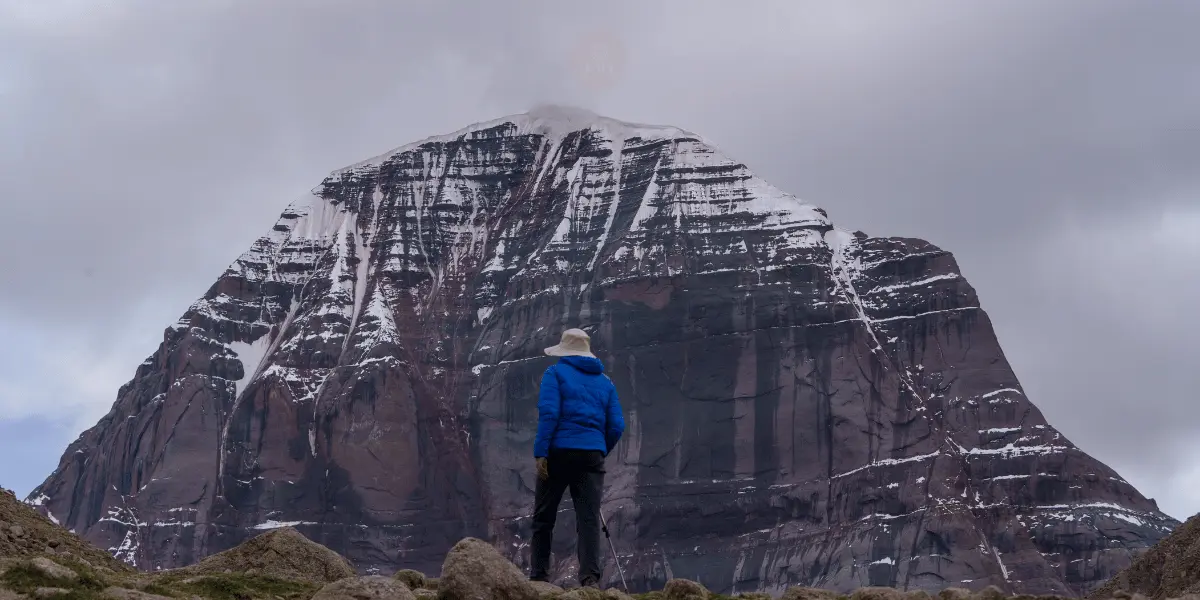
Kailash Mansarovar Yatra Private Tour presents a 16-day spiritual journey for individuals wishing for a personalized experience. Having a private package avails comfort, exclusivity, and an intimate sharing of experience in the sacred landscape-for those who want a bit of peace and quiet along the way.
Outline Itinerary
|
Day 01: Kathmandu Arrival. |
|
Day 02: Visa Application, Kathmandu Sightseeing. |
|
Day 03: Bhaktapur Sightseeing, Nagarkot Stay. |
|
Day 04: Chandragiri Sightseeing. |
|
Day 05: Packing and Final Preparation. |
|
Day 06: Drive to Dhunche or Syabrubesi or Timure. |
|
Day 07: Drive to Kyirong. (2850 m) |
|
Day 08: Drive to Saga. (4500 m) |
|
Day 09: Drive from Saga to Lake Mansarovar. (4650 m) |
|
Day 10: Drive to Darchen. (4700 m) |
|
Day 11: Drive to Yama Dwara, Trek to Deruphuk. (5050 m) |
|
Day 12: Trek to Zuthulphuk. (4800 m) |
|
Day 13: Zuthulphuk to Saga. |
|
Day 14: Drive back to Kyirong. (2850 m) |
|
Day 15: Drive to Kathmandu. (1400 m) |
|
Day 16: Transfer to Airport. |
Learn More: Kailash Mansarovar Yatra Private Tour
Travel Tips
The Kailash Mansarovar Yatra is a pilgrimage that is more than just spirituality; hence planning and know-how assume great importance. From travel tips for the selection of the best route to information on local customs and on preparing for sudden changes in weather, these tips will make your journey much easier, safer, and rewarding.

Physical Fitness
The Kailash Mansarovar Yatra demands a lot physically, with the trek around Mount Kailash being especially difficult due to high altitude. Physical preparation for your body is essential to make this experience safe and truly fulfilling. Ideally, you should start training well in advance of your departure, about 6 to 8 weeks prior. The key is to improve your overall endurance through cardiovascular exercises like walking, jogging, or cycling. Strength training, again, very particularly for your legs, will be beneficial-stair climbs, squats, and lunges are perfect examples. Breathing exercises like Pranayama should also be practiced to improve the body's oxygen utilization mechanisms needed up high. Anyone aged over 70 or having any pre-existing medical conditions might need to undergo a thorough medical examination ahead of the journey.
Altitude Acclimatization
Altitude sickness is a real threat during the Kailash Mansarovar Yatra as the altitude level will be above 5000 m and, if not taken care of, may cause severe problems. The most vital prevention of AMS is acclimatization. Most of the itineraries also allow a couple of rest days in places like Kyirong and Taklakot for gradual acclimatization. While ascending, the "climb high, sleep low" principle should be adhered to as much as is practicable to minimize risk. Staying hydrated, taking light meals during the first days, and avoiding alcohol and caffeine will go a long way in assisting with acclimatization. Some travelers are prescribed medication such as Diamox to aid acclimatization, but this should only be consumed under a physician's supervision.
Packing Essentials
Packing wisely for the Kailash Mansarovar Yatra is necessary, as even in the warmest months, the temperature can be low, freezing at night. Packing needs to be done keeping in mind these drastic weather changes. Following is a list of clothing essentials that ought to be considered for a safer pilgrimage.
|
Clothing Requirements |
|
Warm and comfortable clothes |
|
Trekking/Hiking Shoes |
|
Trekking Pants |
|
Comfortable Shorts (if required) |
|
Fleece |
|
Long Sleeved T-Shirt |
|
Rain Jacket |
|
Toiletries/Personal Essentials |
|
Soap/Shampoo |
|
Toiletries |
|
Dust Mask and Sanitizer |
|
Toilet paper, wet tissues |
|
Quick-dry towel |
|
Sunscreen |
|
Important Items |
|
Travel Documents (Passport, Permits, Visa) |
|
Cash |
|
Medical Certificates (if any) |
|
Other Items |
|
Headlamp |
|
First aid kit |
|
Camera, Batteries, Binocular, hiking poles |
|
Sunglasses |
|
Water Bottle |
|
Plastic bags, Deo, thread, and needle |
Communication and Currency
During the journey, pilgrims are provided with Nepalese and Chinese SIM cards for communication and internet facilities. Chinese SIM cards work within Tibet, but acquiring one usually requires passport verification and may still have limited coverage.
When it comes to currency, for the Nepal side, you can either use cash exchanged in NPR or ATMs can be found anywhere. Once you travel to the Tibet side, it will be better to carry enough money, as ATMs and credit cards are rare. For your cash, you must carry the Chinese currency (Yuan), for it is the only currency accepted in that region. Its current currency exchange rates are: 1 Chinese Yuan = USD 0.14, 1 Chinese Yuan = NPR 18.70, and 1 Chinese Yuan = 11.7 INR. You can manage Yuan conversion before crossing the border directly from banking institutions, tour operators, or immigration offices. Indian tourists can use some Indian currency in many parts of Nepal, although only ₹100 denomination notes are accepted as legal tender. The Nepalese currency is pegged to the Indian Rupee at the fixed exchange rate of 1 INR = 1.60 NPR.
Note: Please recheck the current currency exchange rate.
Conclusion
The pilgrimage to Kailash Mansarovar is a journey that may seem complex due to the high altitude, unpredictable weather, and rugged terrain. Therefore, knowing about these difficulties and their impact on travel plans can help in enjoying the overall experience of the spiritual journey. The best time to travel for this yatra is between May and September, thereby greatly enhancing the pilgrimage or trekking experience. In these months, the weather is fine, with better visibility and merciful temperatures, making the rugged terrain gentler and the sacred sites more breathtaking. Regardless of the season chosen, one must be aware of the general advantages and disadvantages that apply in one season or another. Keeping in mind the seasonality of your choices, the pilgrimage can be timed to ensure that it will be under the most favorable backdrop, which can be experienced amidst the high spirituality the place offers and the sheer beauty it can be. May your journey be blessed and your experience truly unforgettable.
Frequently Asked Questions (FAQs)
Here are some frequently asked questions:
When is the best time to visit Kailash Mansarovar?
Kailash Mansarovar Yatra is ideal to visit from May to September. These months are comparatively pleasant and the routes remain open. June and August see a large influx of pilgrims because of the season being the best of the best and also the corresponding Saga Dawa Festival falls in June, which has enormous spiritual importance for the devotees.
Can I go to Kailash Mansarovar during winter?
The winter season of Kailash Yatra, which falls between November and March, is not at all advisable for tourists. The weather is predominantly harsh, with the average temperature often falling well below zero degrees. Heavy snowfall may block mountain passes and normally makes travel quite unsafe and at times even impossible. Moreover, the region is also closed for tourists during these months.
Is the Yatra crowded during the peak time?
Yes, the Yatra can be heavily crowded during peak season, especially during June and August, since many of the people travel for pilgrimage and religious-spiritual purposes. But the place is vast, and the Yatra is managed well, so it may have large crowds yet seldom feels overcrowded. It is highly recommended to book in advance for these months.

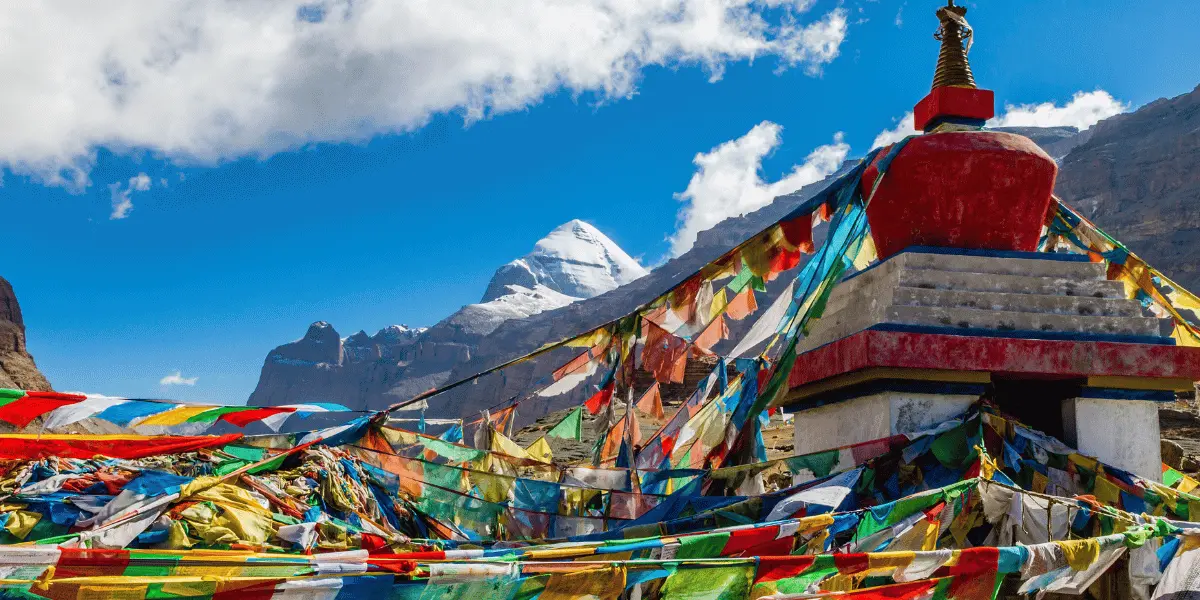
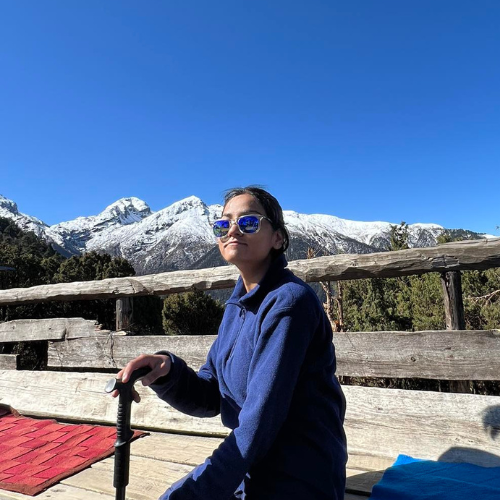 Mandira Itani
Mandira Itani